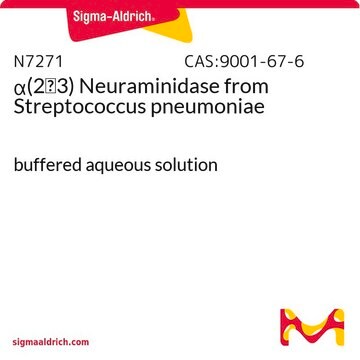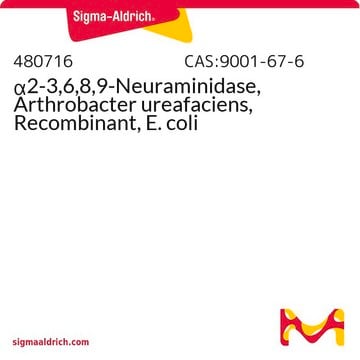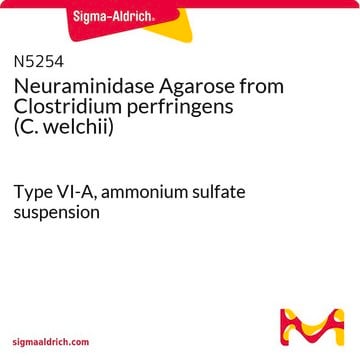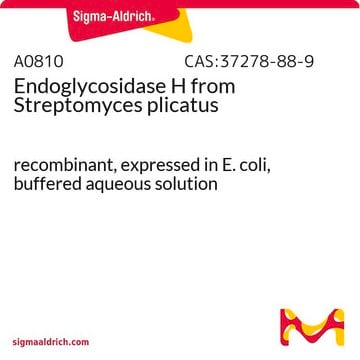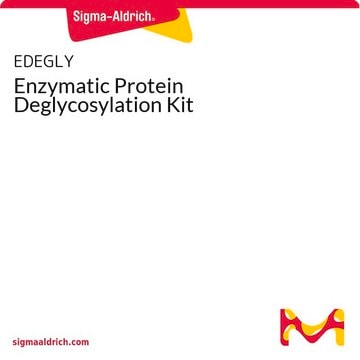N8271
α(2→3,6,8,9) Neuraminidase from Arthrobacter ureafaciens
recombinant, expressed in E. coli, buffered aqueous solution
Synonym(s):
Neuraminidase from Arthrobacter ureafaciens, Acyl-neuraminyl Hydrolase, Sialidase
Select a Size
About This Item
Recommended Products
recombinant
expressed in E. coli
Quality Level
form
buffered aqueous solution
specific activity
≥135 units/mg protein
mol wt
88 kDa
95 kDa
foreign activity
β-Galactosidase, α-mannosidase, β-hexosaminidase, α-fucosidase, and proteases, none detected
shipped in
wet ice
storage temp.
2-8°C
Looking for similar products? Visit Product Comparison Guide
Related Categories
Biochem/physiol Actions
Packaging
Unit Definition
Physical form
Preparation Note
Storage Class Code
12 - Non Combustible Liquids
WGK
WGK 1
Flash Point(F)
Not applicable
Flash Point(C)
Not applicable
Personal Protective Equipment
Regulatory Listings
Regulatory Listings are mainly provided for chemical products. Only limited information can be provided here for non-chemical products. No entry means none of the components are listed. It is the user’s obligation to ensure the safe and legal use of the product.
JAN Code
N8271-25UL-PW:
N8271-BULK:
N8271-.2UN:
N8271-.2UN-PW:
N8271-20UL-LBL:
N8271-25UL-LBL:
N8271-VAR:
N8271-25UL:
Choose from one of the most recent versions:
Already Own This Product?
Find documentation for the products that you have recently purchased in the Document Library.
Customers Also Viewed
Articles
Learn about O-linked glycan strategies, O-glycosidase actions, how to remove sialic acid residues, β-Elimination, and O-glycan modifications.
Active Filters
Our team of scientists has experience in all areas of research including Life Science, Material Science, Chemical Synthesis, Chromatography, Analytical and many others.
Contact Technical Service




